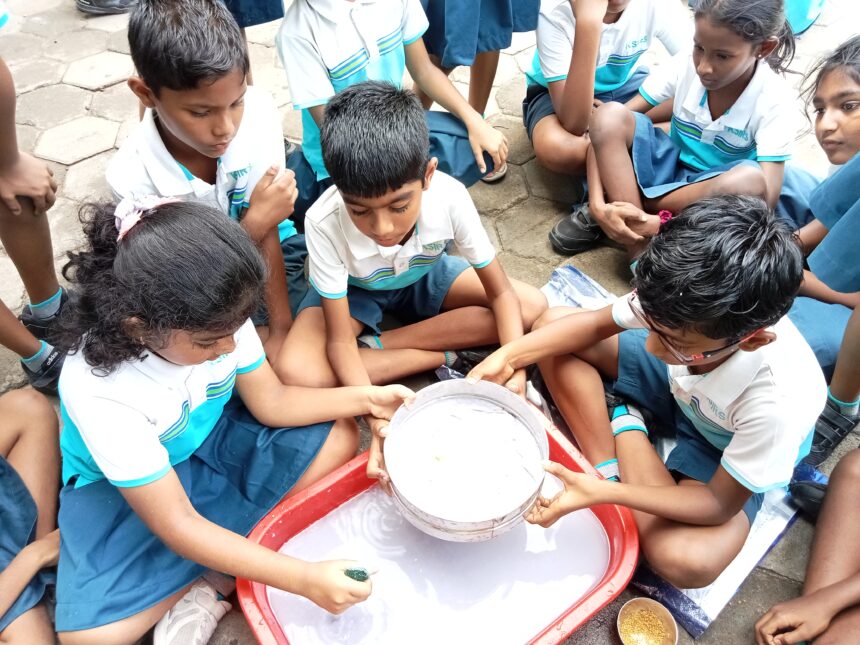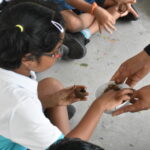Plantable seed paper, also known as seed paper or plantable paper, is a unique and eco-friendly product that combines papermaking with embedded seeds. This special paper is designed to be planted in the ground, and as it decomposes, it allows the embedded seeds to germinate and grow into plants. Here’s how plantable seed paper is typically made and some of its uses and benefits:
Materials Needed:
- Recycled paper, newspaper, or scrap paper
- Flower, herb, or vegetable seeds of your choice (ensure they are suitable for your local climate and growing conditions)
- Water
- Blender or food processor
- Mesh screen or fine sieve
- Cookie cutters or molds (optional)
- Towels or absorbent cloths
- Rolling pin
- Parchment paper
- Baking sheets
Steps to make the seed paper:
- Prepare the paper:
- Tear the scrap paper into small pieces.
- Soak the paper or fabric pieces in water overnight to soften them.
- Blend the paper or fabric:
- Drain the soaked paper to remove excess water.
- Place the softened paper in a blender or food processor.
- Add just enough water to cover the paper.
- Blend the mixture until it turns into a smooth pulp. You may need to do this in batches.
- Prepare the seeds:
- In a separate container, mix the flower, herb, or vegetable seeds with a small amount of water to create a slurry. The water helps the seeds adhere to the paper pulp.
- Combine the pulp and seeds:
- Pour the seed slurry into the paper pulp and mix well, ensuring an even distribution of seeds throughout the pulp.
- Shape the paper:
- If you have cookie cutters or molds, you can use them to create specific shapes. Alternatively, you can free-form the paper by hand.
- Place a sheet of parchment paper on a flat surface to work on.
- Form the paper pulp into shapes:
- Scoop the pulp and seed mixture onto the parchment paper.
- Use cookie cutters or molds to shape the paper into your desired shapes. You can also create sheets of paper if you don’t want specific shapes.
- Press and dry the paper:
- Lay a mesh screen or fine sieve over a towel or absorbent cloth.
- Place the shaped paper on the screen.
- Cover the paper with another towel or cloth.
- Use a rolling pin to gently press out excess water and flatten the paper.
- Dry the paper:
- Carefully transfer the paper to a drying rack or a flat surface in a well-ventilated area.
- Allow the paper to air dry completely. This may take a few days, depending on the thickness of the paper and the humidity.
- Cure the paper (optional):
- Once the paper is dry, you can further press it by placing it between heavy books or under a weight for a day to ensure it’s flat.
- Plant the seed paper:
- To use the plantable paper, simply bury it in soil, either outdoors or in pots.
- Water the paper thoroughly and keep it moist until the seeds germinate and grow into plants.
Uses and Benefits of Plantable Seed Paper:
- Eco-friendly: Plantable seed paper is made from sustainable materials, such as recycled paper and natural fibers. It decomposes naturally, leaving behind no waste and the seeds will eventually sprout, creating beautiful flowers, herbs, or vegetables while the paper naturally alongside.
- Reduce waste: Plantable seed paper encourages recycling and helps reduce the amount of paper waste in landfills.
- Gardening: When planted, the paper naturally decomposes, and the seeds embedded in it germinate and grow into plants. This is a sustainable way to start a garden or contribute to reforestation efforts.
- Sustainable Gift Option: Plantable seed paper can be customized with various designs, colors, and seeds to suit specific events and purposes. It’s often used for eco-friendly invitations, wedding favors, greeting cards, and promotional materials.
- Educational Tool: Plantable seed paper can be a great educational tool for teaching children and adults about environmental conservation and the plant life cycle.
- Support for local biodiversity: Depending on the seeds embedded in the paper, it can contribute to local biodiversity and attract pollinators and wildlife.
To use plantable seed paper, simply plant it in a suitable location (indoors or outdoors), water it, and provide the right growing conditions for the specific plant seeds. Over time, the paper will decompose, and the seeds will sprout and grow into mature plants. It’s a creative and sustainable way to enjoy both the message on the paper and the plants it produces.








